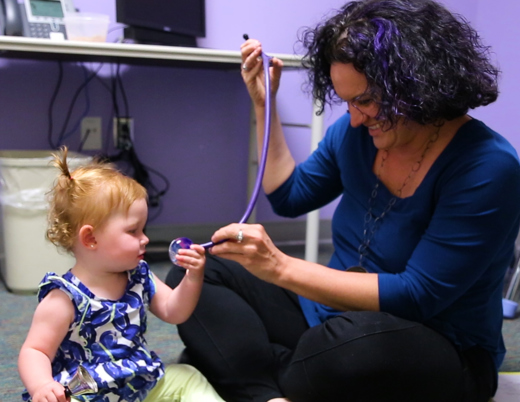Key takeaways
-
The presence of CDA does not predict universal progression to CD.
-
Low positive tTGA results don’t necessarily indicate the need for biopsy or treatment.
-
High proportion of children who experience a period of DA will remit without treatment.
Research background: Considering the increasingly high incidence of celiac disease
To date, there is little known about the incidence of celiac disease (CD) in children in the United States. Studies; research efforts demonstrate that the incidence of CD continues to increase in the United States and Europe, now occurring in an estimated 1 to 3% of children.
Despite the growing prevalence of CD, clinical trials aiming to prevent its development via dietary modifications in infancy haven't been successful. And while a gluten-free diet is an effective treatment option for CD, there remains a need for diagnostic evidence and universal screening ss many cases of CD are not diagnosed or treated. Furthermore, there is currently no known optimal age to test for CD, so repeat testing is often necessary.
A previous study conducted by researchers here at the Digestive Health Institute at Children's Hospital Colorado found the cumulative incidence of CD at 5 years old as .09%.
Our latest study, conducted by Edwin Liu, MD, and other researchers at the Digestive Health Institute's Colorado Center for Celiac Disease study aims to:
- Learn more about celiac disease autoimmunity (CDA) and its correlation to the growing incidence of CD in Denver-born individuals
- Clarify the frequency of CDA and how it evolves to CD
- Shed more light on the cumulative incidence of CD in children among the general population
- Follow the natural history of CDA and its evolution to CD
- Determine the incidence of CD in the adolescent population in Denver, Colorado
Research methods: HLA – DQ genotyping in celiac disease
The research team followed a total of 1,339 children with DQ genotypes — genotypes that are considered susceptible to celiac disease and type 1 diabetes – from a young age. The participants were followed for up to two decades to determine if they would develop tissue transglutaminase autoantibodies (tTGA).
Between 1993 and 2004, the Diabetes Autoimmunity Study in the Young completed HLA-DR, DQ genotyping in 31,766 Denver newborns. This study recruited newborns that were born with HLA genotypes associated with CD as well as 54 subjects without an HLA risk for type 1 diabetes or CD soon after birth. To supplement the group at risk for CD, the research team also enrolled 2-year-old subjects with additional high-risk celiac genotypes.
Subjects had blood draws for tTGA at 9, 15 and 24 months of age; any positive tests were repeated in three to six months. Patients were referred to a pediatric gastroenterologist after two positive tTGA blood tests.
CDA was defined as positive tTGA persistent on two consecutive blood draws at least three months apart or a single positive tTGA test and intestinal biopsy confirming CD. CD was defined as tTGA plus a Marsh 2 or 3 lesion on intestinal biopsy or CDA with high tTGA levels (greater than 0.5) on at least two visits.
Results: Exploring the development of celiac disease in children
- Of the 1,339 subjects that Dr. Liu's team followed, 112 developed CDA, including 66 who met criteria for CD
- None of the 54 control subjects developed CD
- Of the 38 subjects with CD confirmed by biopsy, 81% were symptomatic
- Of the 28 with CD based on high tTGA levels, 54% were symptomatic
- 30% of CD subjects were asymptomatic
Key study findings
- The presence of CDA isn't a predictor of universal progression of CD
- Children can develop CDA and CD throughout the first 10 years of life and beyond, although chances decrease between age 10-15
- Although more than 5% of children may experience a period of CDA, not all children develop CD or require gluten-free diets
- The 3.1% cumulative incidence of CD in Denver by age 15 is the highest to date nationally
- Although limited to Denver, findings are consistent with the increasing incidence of CD worldwide
Conclusion: Understanding the mechanism of celiac disease
In this 20-year prospective study of 1,339 children who had genetic risk factors for celiac disease, our research team found the continued development of CD through early childhood. By age 15, about 3.1% of the Denver population will develop CD and another 2% will develop a lesser degree of CDA.
The study indicates that most occurrences of celiac autoimmunity develop before the age of 10, which could inform future universal celiac disease screening efforts.
Featured Researchers

Edwin Liu, MD
Director, Colorado Center for Celiac Disease
Digestive Health Institute
Children's Hospital Colorado
Professor
Pediatrics-Gastroenterology, Hepatology and Nutrition
University of Colorado School of Medicine





 720-777-0123
720-777-0123










